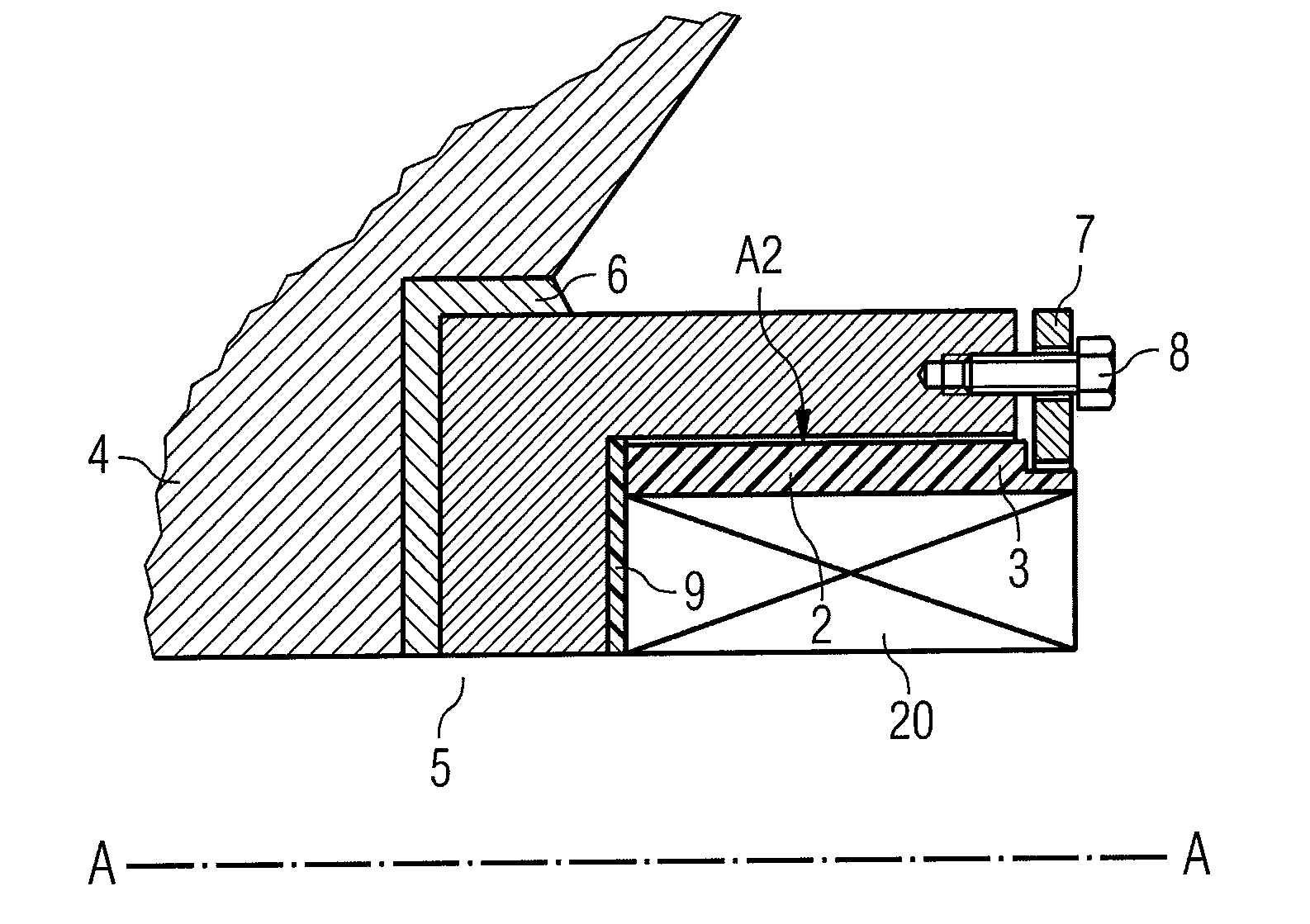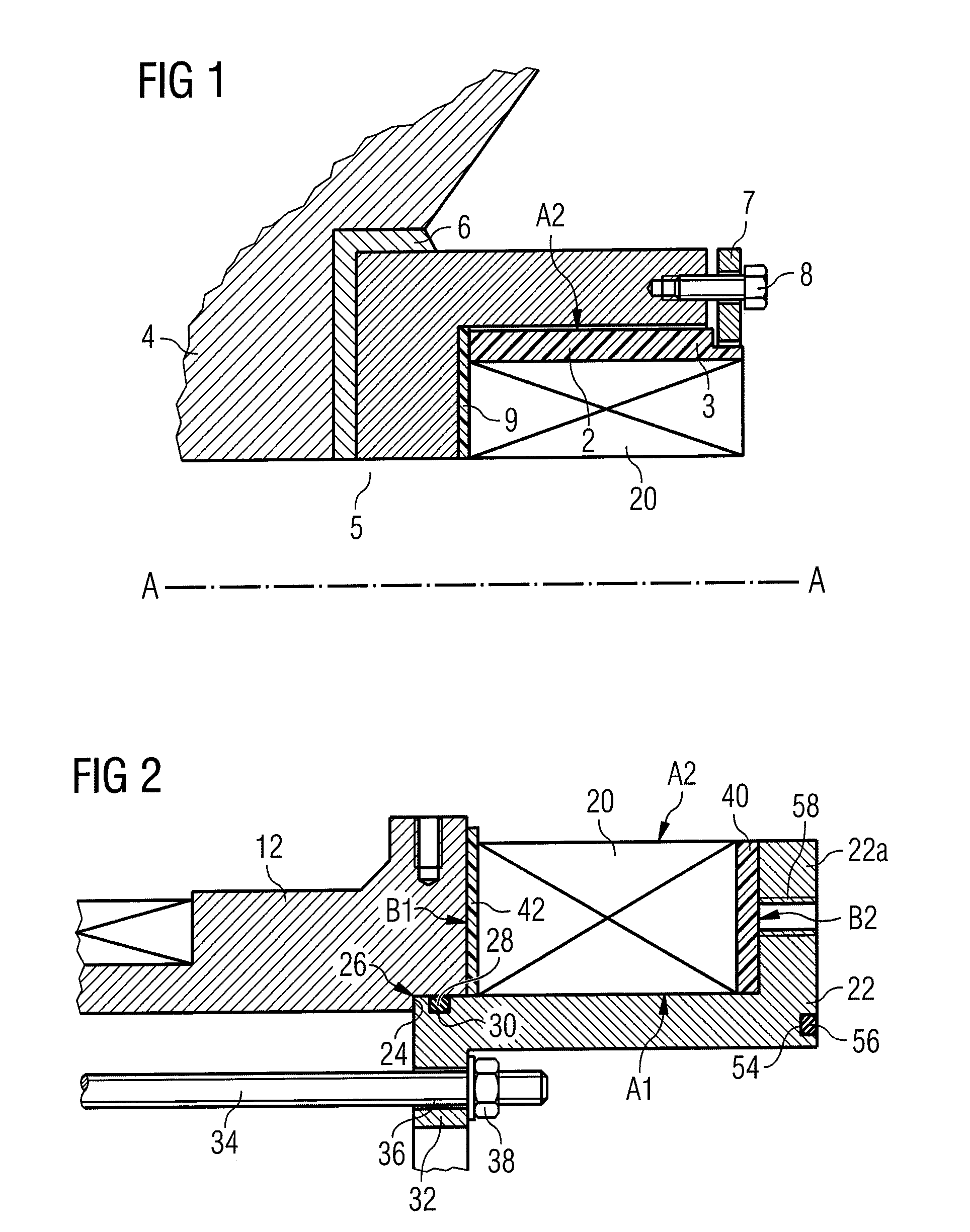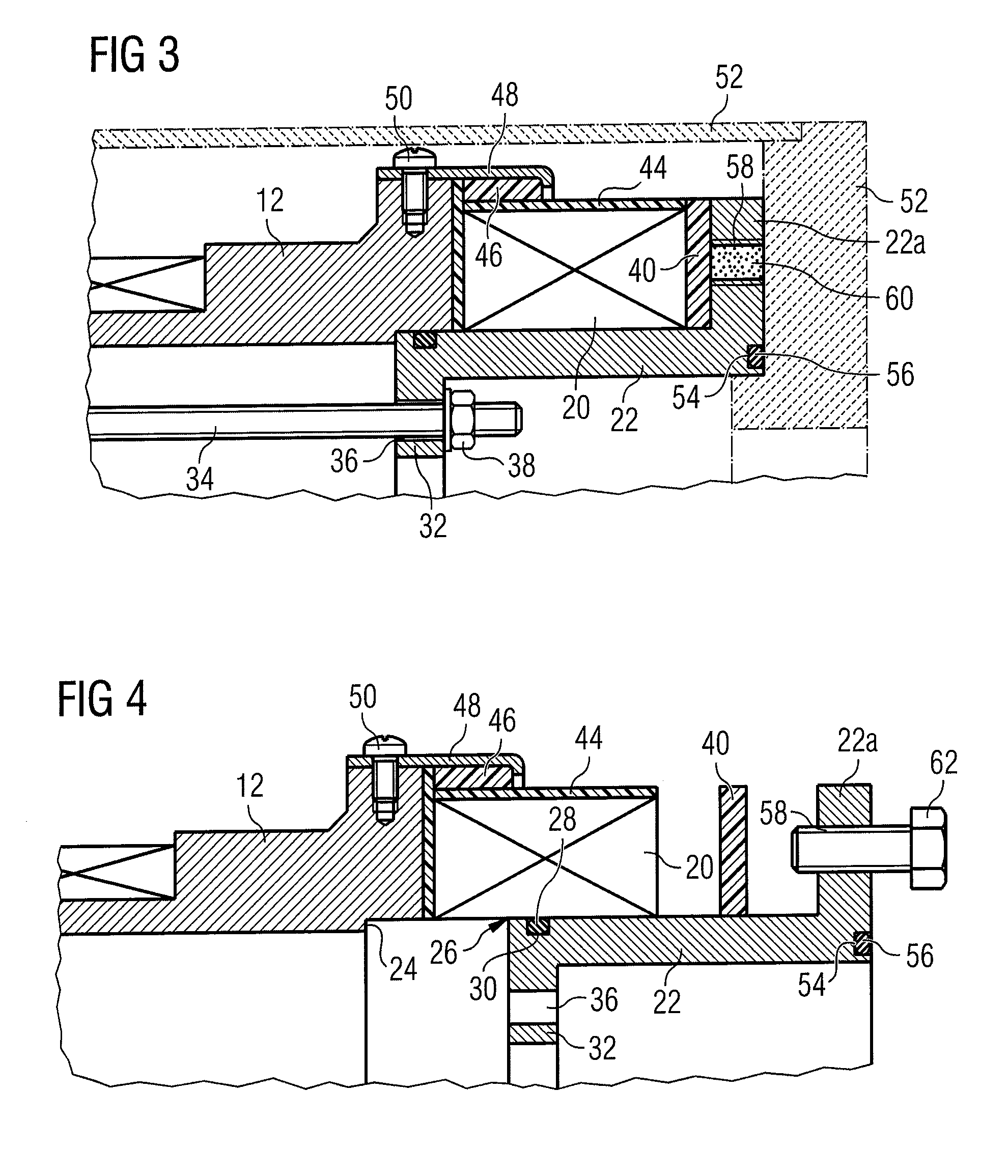Wound In-Situ Moulded Magnet End Coil and Method for Production Thereof
- Summary
- Abstract
- Description
- Claims
- Application Information
AI Technical Summary
Benefits of technology
Problems solved by technology
Method used
Image
Examples
Example
DETAILED DESCRIPTION OF THE DRAWINGS
[0025]It is customary to refer to surfaces of rectangular solenoidal coils as follows. The radially inner and outer surfaces, and radii, are referred to as A1 and A2, respectively. The axially inner and outer surfaces, and positions, are referred to as B1 and B2, respectively. These labels are marked on the appropriate faces of end coil 20 in FIG. 2.
[0026]As shown in FIG. 2, the present invention provides for end coil 20 to be wound into a temporary mould 22. Preferably, this temporary mould is a single-piece annular temporary mould. This may be achieved by ensuring that the mould may simply be slid away from the former when moulding is finished, by having no raised portions axially closer to the former than the retaining wall 22a for retaining the coil to be wound. In order to achieve the wire consumption reduction and length reduction benefits of moulded end coils, there is no former material under the end coil 20 or on its B2 face when complete...
PUM
| Property | Measurement | Unit |
|---|---|---|
| Force | aaaaa | aaaaa |
| Radius | aaaaa | aaaaa |
| Circumference | aaaaa | aaaaa |
Abstract
Description
Claims
Application Information
 Login to View More
Login to View More - R&D Engineer
- R&D Manager
- IP Professional
- Industry Leading Data Capabilities
- Powerful AI technology
- Patent DNA Extraction
Browse by: Latest US Patents, China's latest patents, Technical Efficacy Thesaurus, Application Domain, Technology Topic, Popular Technical Reports.
© 2024 PatSnap. All rights reserved.Legal|Privacy policy|Modern Slavery Act Transparency Statement|Sitemap|About US| Contact US: help@patsnap.com










